David A. Tepper Quadrangle
The Tepper Quad is a 315,000-square-foot, state-of-the-art building that houses the Tepper School of Business, the David and Susan Coulter Welcome Center, multi-use HUB/Forum, 600-seat Simmons Auditorium and a 7,200-square-foot Fitness Center. There is also a cafe and coffee bar. It contains specialized areas designed for programs such as the Entrepreneurship Center and the TEL Center (Technology Enhances Learning). The area also includes a 130-space parking garage under the building, 290 surface parking spaces in the remaining Morewood surface lot, landscaping and site utility infrastructure.
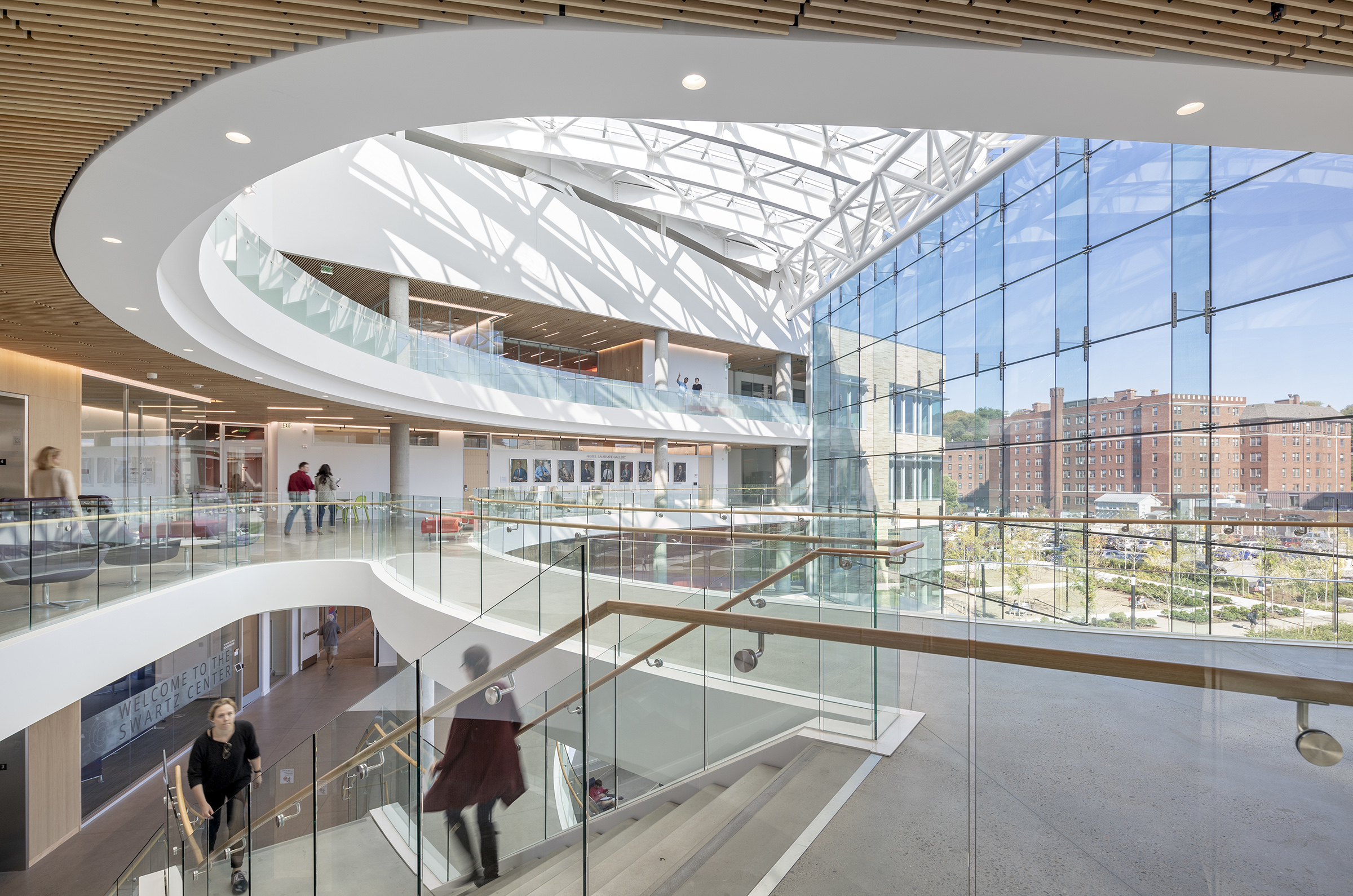
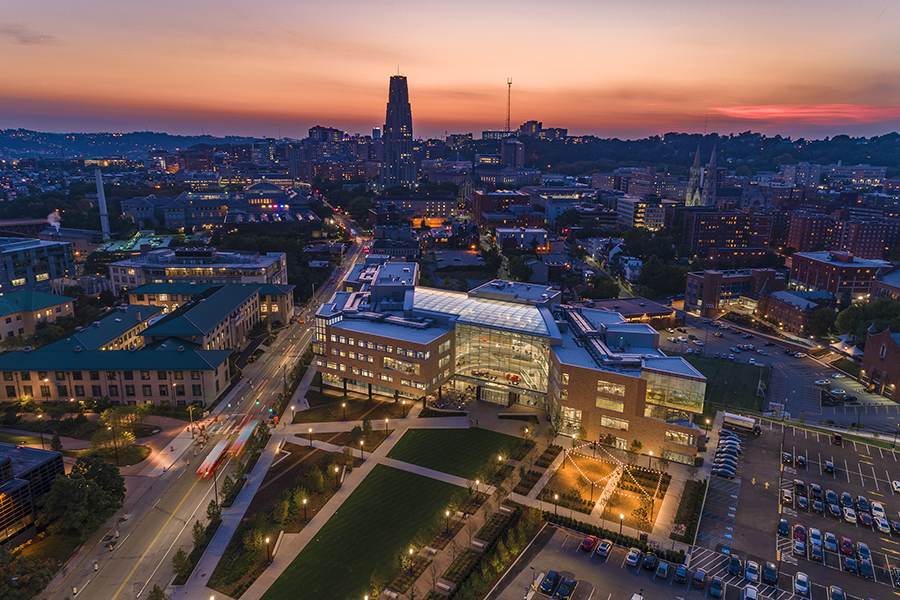
Sustainable Sites
- Instead of developing unpaved land, the Tepper Quad complex was constructed on a densely developed and connected area of the campus. The new quad adds approximately 4.5 acres of open green space to what was previously an asphalt parking lot.
- Transit access and pedestrian and bicycle infrastructure make the site convenient to get to and encourage low-impact modes of transportation.
- Highly reflective roof surfaces and vegetated green roofs reduce the heat island effect, while green infrastructure on the site helps reduce water pollution.
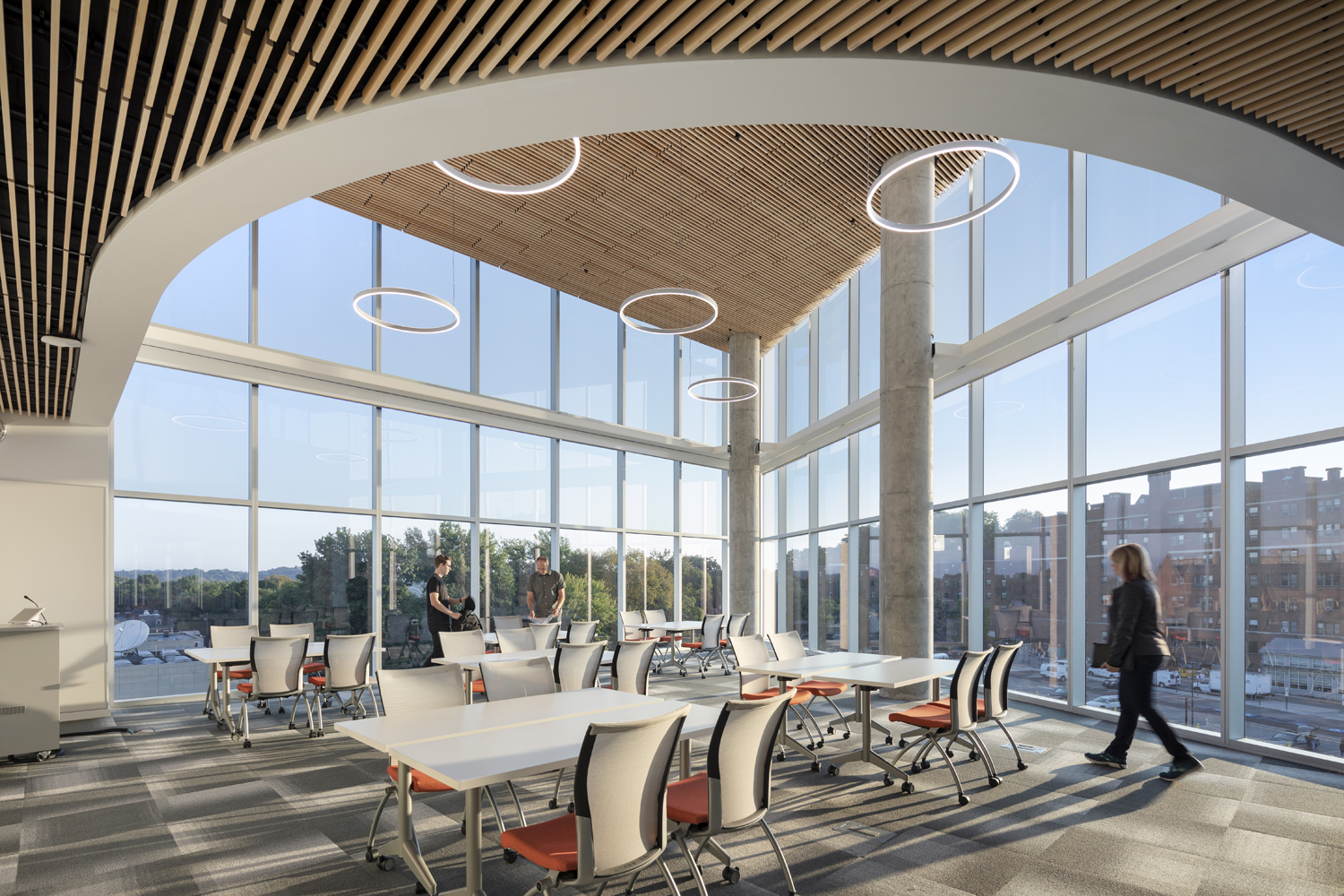
Energy & Atmosphere
- Overall, the building uses 30% less energy than a conventional building of similar size and use (calculated by energy cost).
- All water and energy used is recorded in real-time and analyzed for better efficiency.
- All energy use is offset by the purchase renewable energy credits across the University.
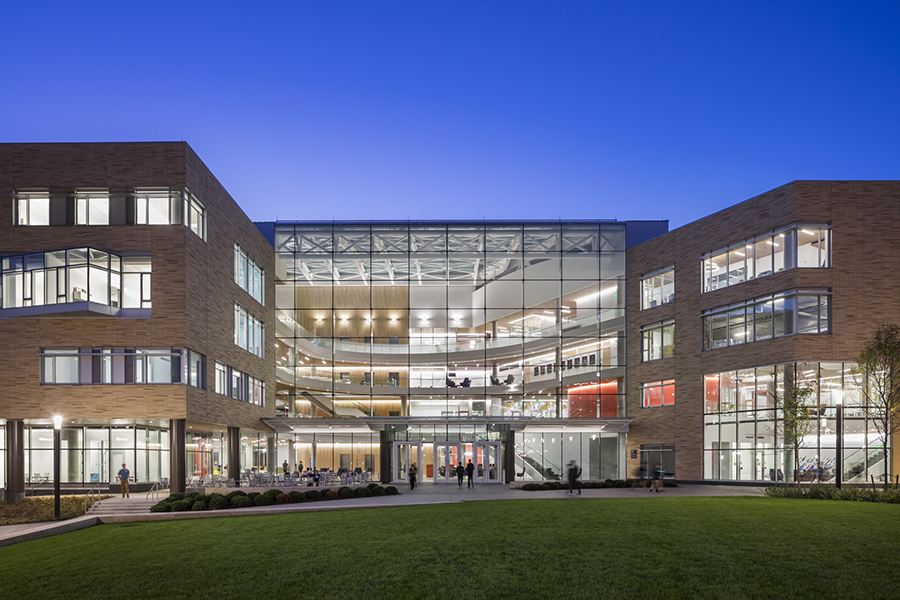
Water Efficiency
- Low-flow fixtures help the building use 50% less potable water than a conventional building of similar size and use.
- Waste water is reduced by 62%.
- An underground cistern stores rainwater that is collected from the roof for non-potable uses.
- A sustainable landscape comprised of native, drought tolerant plants eliminates the need for any artificial irrigation.
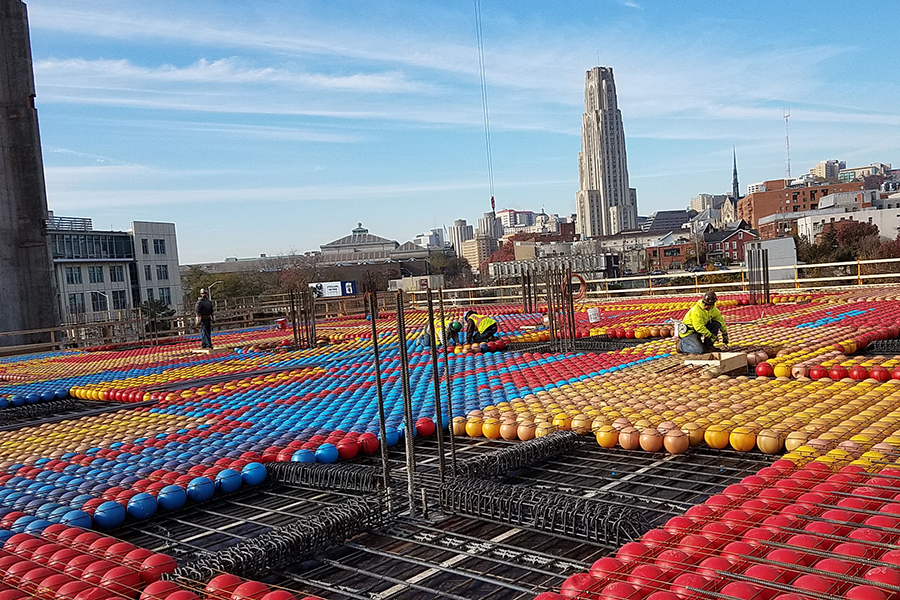
Materials
- Floors were constructed with an innovative system made from recycled plastic balls, which reduced the use of concrete by 35%.
- This reduced the project’s embodied energy by 30% while also saving time and money. The system also provides increased flexibility for changing the configuration and use of interior spaces.
- 99% of the wood used in the building is certified by the Forest Stewardship Council, ensuring that it came from responsibly managed forests. Half of all the building materials were sourced from within the region, lessening the project’s carbon footprint and helping the local economy.
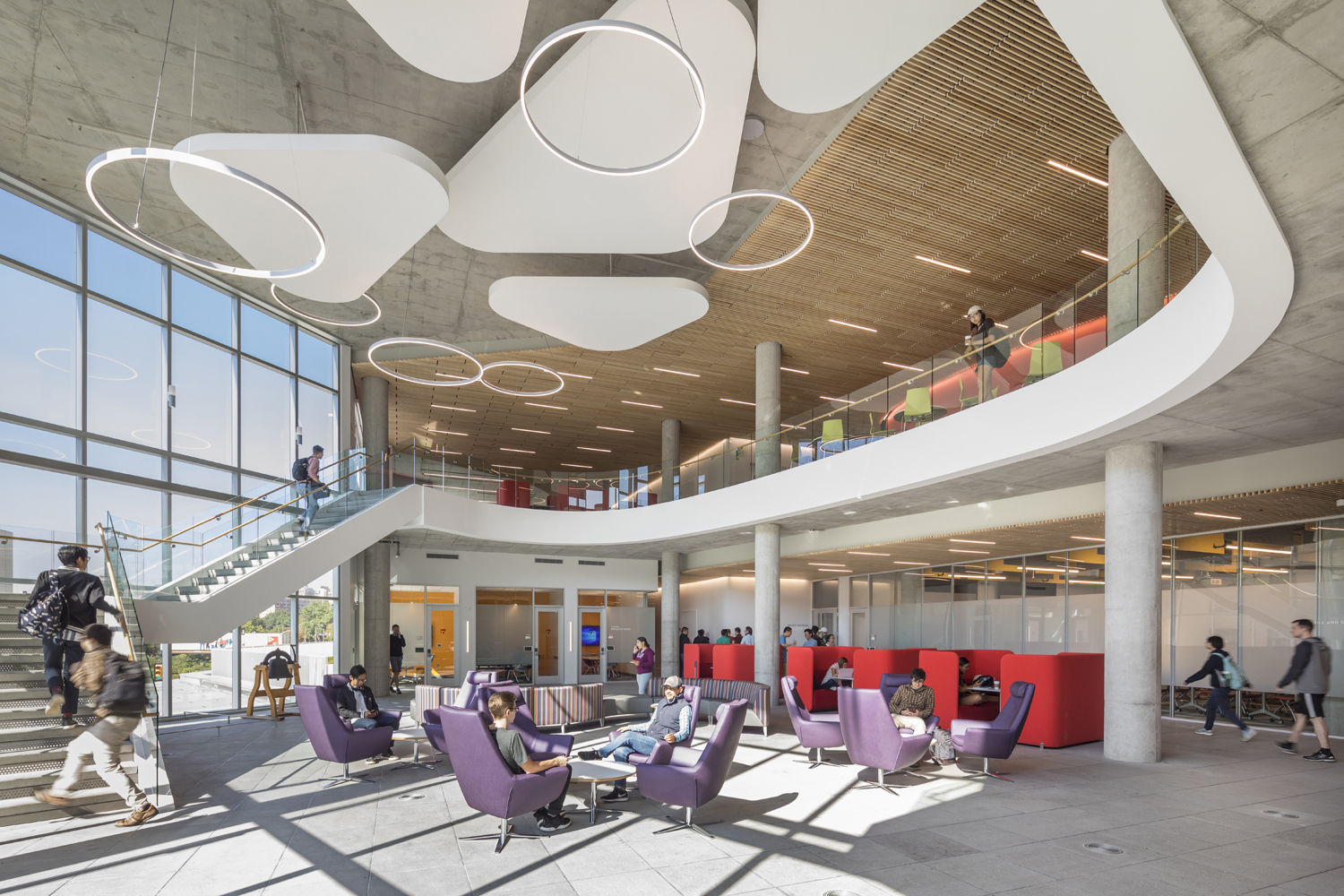
Healthy Interiors
- Abundant natural light and special glazing that reduces glare provide optimal comfort for occupants’ eyes.
- 85% of spaces in the facility have views to the outside.
- CO2 sensors trigger an automated system to cycle fresh air into the building.
- A healthy environment is maintained through the use of low VOC materials and finishes, a green cleaning program, and comprehensive indoor air quality management.
Team Members
Campus Design and Facility Development worked in conjunction with the following organizations to complete the project:
PJ Dick, Pittsburgh, PA - Construction Manager
Moore Ruble Yudell Architects & Planners, Santa Monica, CA - Executive & Design Architect
Renaissance 3 Architects, Pittsburgh, PA - Associate Architect
Buro Happold, Los Angeles, CA - MEP, Structural, and Sustainability Engineer
Langan, Canonsburg, PA - Civil Engineer